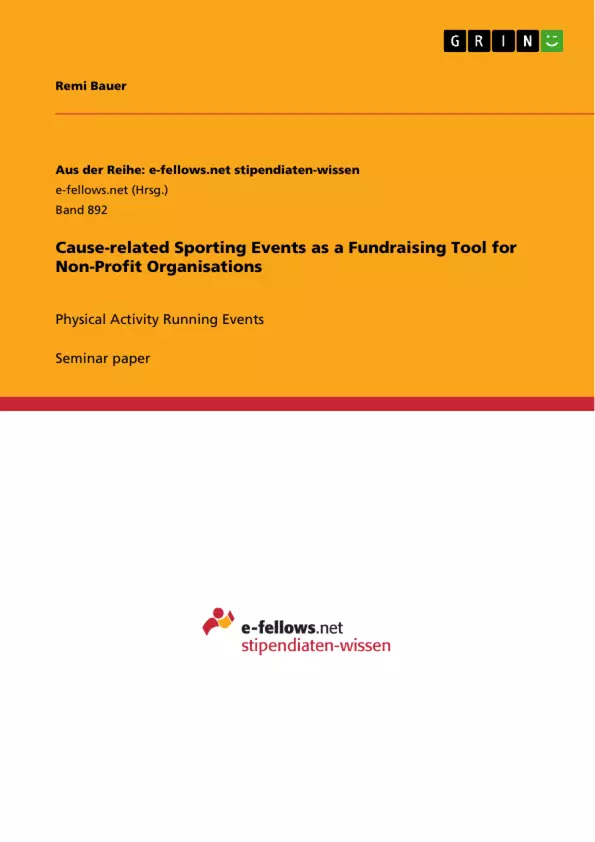This report investigates physical activity running events as a fundraising tool for organisations in the Third Sector. With circa 50% of non-profit organisations relying on income generated from special events, physical activity fundraising events are becoming more and more popular. Staging fun runs is one of the most employed formats of physical activity fundraising events. By collecting information and evidence from academic literature, the aim of this piece of work is to explore the opportunities and challenges posed by physical activity running events for Third Sector organisations. With an in-depth literature review, this empirical work highlights the three main objectives of this fundraising tool: (a) the aim for revenue generation, (b) the key aspect of raising awareness of the non-profit organisation and its cause, and (c) the goal of attracting as well as cultivating financial contributors. The findings imply that running events are not the most cost-efficient fundraising tool and sometimes initially cost more to raise a dollar; however they have many advantages and offer lots of opportunities to Third Sector organisations. Yet, many organisations fail to exploit the full spectrum of potential benefits offered by physical activity running events.
Inhaltsverzeichnis (Table of Contents)
- Introduction
- Methodology
- Fundraising in the Third Sector
- Fundraising Events
- Objectives of Fundraising Events
- Revenue Generation
Zielsetzung und Themenschwerpunkte (Objectives and Key Themes)
This report aims to examine the role of physical activity running events in fundraising for Third Sector organizations. It explores the opportunities and challenges associated with these events, highlighting their potential as a fundraising tool and considering their cost-effectiveness.
- The growing popularity of physical activity fundraising events
- The objectives of fundraising events: revenue generation, awareness raising, and attracting contributors
- The advantages and disadvantages of physical activity running events as a fundraising tool
- The importance of cost-effectiveness in fundraising event planning
- Examples of successful physical activity fundraising events
Zusammenfassung der Kapitel (Chapter Summaries)
The report begins by introducing the increasing popularity of marathon fundraising events, particularly in the USA. It then outlines the methodology, focusing on secondary research to analyze the opportunities and challenges of physical activity running events for Third Sector organizations.
Chapter 3 discusses the importance of fundraising for non-profit organizations and the growing competitive environment within the Third Sector. The report highlights the reliance of non-profits on donations and the need for effective fundraising strategies.
Chapter 4 focuses on fundraising events, specifically highlighting the popularity of physical activity events like fun runs. The report explores the various types of running events, including those for cancer, multiple sclerosis, diabetes, and stroke, and provides examples of successful events like the Avon Walk for Breast Cancer and Relay for Life.
Chapter 5 outlines the objectives of fundraising events, focusing on revenue generation, raising awareness, and attracting and retaining contributors. The chapter delves into the cost-effectiveness of fundraising events, acknowledging the importance of breaking even to ensure the success of these ventures.
Schlüsselwörter (Keywords)
This report focuses on physical activity fundraising events, specifically running events, as a fundraising tool for non-profit organizations within the Third Sector. Key themes include fundraising strategies, revenue generation, awareness raising, cost-effectiveness, and the increasing competition within the non-profit sector. The report draws upon examples of successful fundraising events like the Avon Walk for Breast Cancer and Relay for Life.
- Quote paper
- Remi Bauer (Author), 2012, Cause-related Sporting Events as a Fundraising Tool for Non-Profit Organisations, Munich, GRIN Verlag, https://www.grin.com/document/268644



